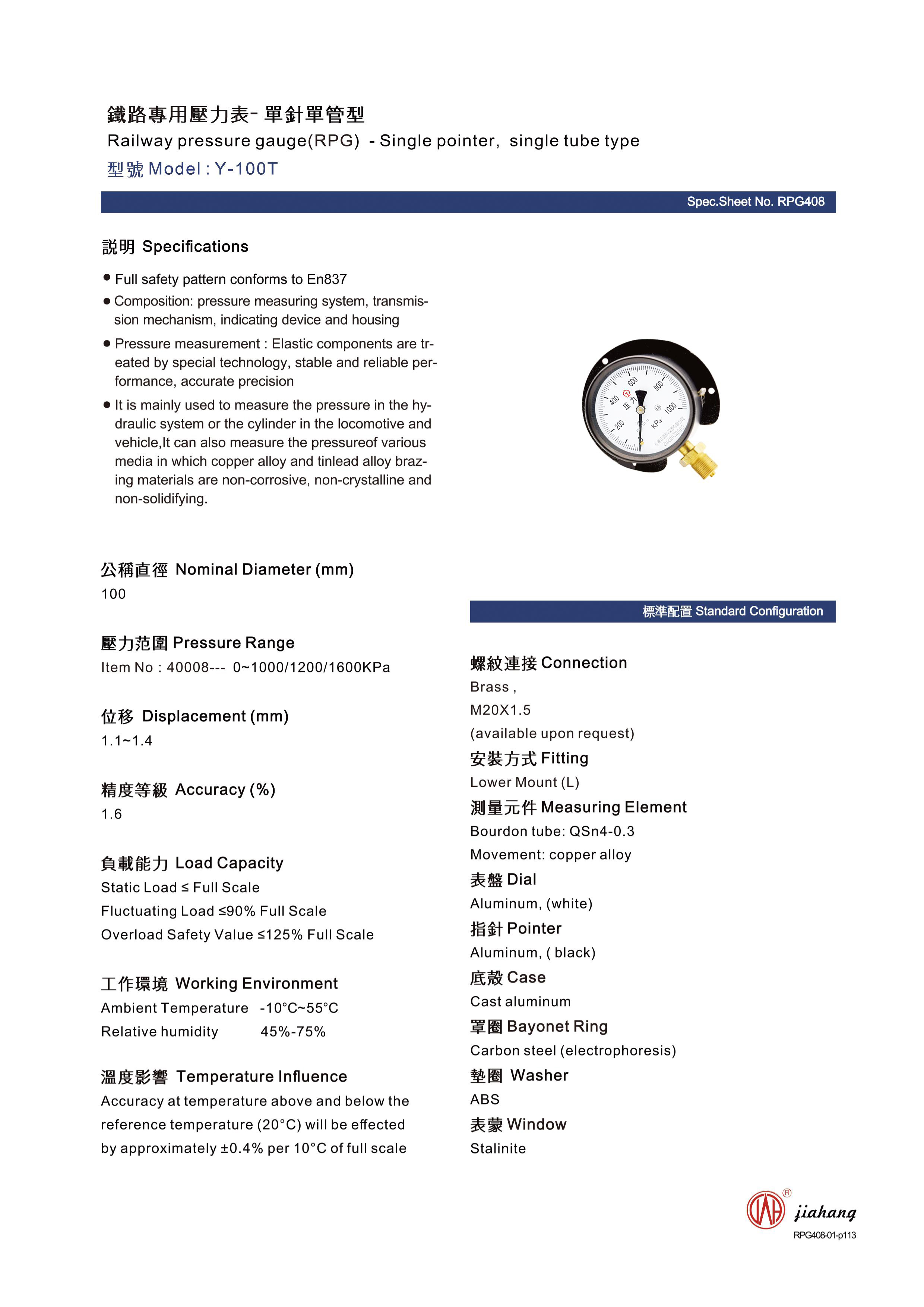
Des . 03, 2024 22:37 Back to list
Understanding the Distinction Between Differential and Absolute Pressure Measurement Instruments
Understanding the Difference Between Differential and Absolute Pressure Gauges
Pressure measurement is critical in various industries, including manufacturing, chemical processing, and HVAC systems. Two common types of pressure measuring devices are differential pressure gauges and absolute pressure gauges. Understanding the differences between these two types is essential for selecting the appropriate instrument for specific applications.
What is Absolute Pressure?
Absolute pressure is defined as the pressure measured relative to a perfect vacuum. It indicates the total pressure exerted by a gas or liquid, excluding any atmospheric pressure. Absolute pressure gauges measure this total pressure, providing data that is always positive. This is crucial in scenarios where knowing the true pressure of a system is vital, such as in vacuum applications or when working with sensitive equipment that could be negatively influenced by changes in atmospheric pressure.
An absolute pressure gauge typically utilizes a sealed reference chamber that isolates its sensing element from external atmospheric pressure. As a result, the reading on an absolute gauge is only influenced by the pressure of the fluid being measured, making it an accurate reflection of the system's pressure.
What is Differential Pressure?
On the other hand, differential pressure gauges measure the difference in pressure between two points within a system. This type of gauge is often used in applications where monitoring the pressure drop across a filter, pump, or other equipment is necessary. By comparing the pressures at two separate points, differential pressure measurement can indicate flow rates, system inefficiencies, or blockage in filters.
Differential pressure gauges can either have one port open to the atmosphere (leading to a gauge reading) or have two ports measuring against one another. These gauges are particularly useful in applications where relative pressure changes are more critical than absolute pressure values. For instance, in climate control systems, monitoring the differential pressure across air filters ensures optimal filtering performance and air quality.
difference between differential and absolute pressure gauges jah

Key Differences
The primary difference between differential and absolute pressure gauges lies in their measurement references
1. Measurement Reference Absolute pressure gauges measure pressure against a perfect vacuum, while differential pressure gauges measure the pressure difference between two points. 2. Applications Absolute pressure gauges are vital in situations where precise pressure is necessary, such as in critical laboratory environments, while differential gauges are more common in process controls, HVAC systems, and applications that focus on flow or filtration.
3. Reading Interpretation Absolute pressure readings are always positive and provide a clear picture of the actual pressure in a system. In contrast, differential pressure readings could be positive, negative, or zero, depending on the pressures being compared.
4. Construction Absolute pressure gauges generally contain a sealed reference chamber, whereas differential pressure gauges may have two ports, one for each pressure point.
5. Use Case Examples Absolute pressure gauges are essential in monitoring pressure in vacuum systems or turbines, while differential gauges are crucial for assessing pressure drops across equipment like filters or in measuring flow rates in pipes.
Conclusion
In summary, both differential and absolute pressure gauges serve distinct and crucial roles in pressure measurement across various applications. The choice between the two depends significantly on the specific needs of the operation. Understanding these differences enables engineers and technicians to make informed decisions, ensuring the safety and efficiency of processes and systems. Whether you require absolute measurements for precision tasks or differential readings for analyzing performance, recognizing the characteristics of each type of gauge is paramount in achieving optimal results in any pressure-sensitive application.
-
High-Precision 5 Valve Manifold Differential Pressure Gauge Suppliers
NewsApr.29,2025
-
High-Precision Diaphragm Vacuum Pressure Gauges Manufacturers & Quotes
NewsApr.29,2025
-
Omega Differential Pressure Gauges High Accuracy & Durability
NewsApr.28,2025
-
Low Pressure Differential Pressure Gauges Precision Solutions & Quotes
NewsApr.28,2025
-
Digital Diaphragm Pressure Gaauge Precision Measurement & OEM Quotes
NewsApr.28,2025
-
Differential Pressure Gauge China Price High-Accuracy & Best Quotes
NewsApr.28,2025
